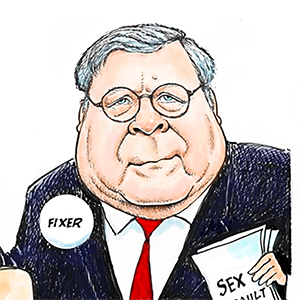COUNTERPOINT: The problem is the Senate, not the filibuster
Published in Op Eds
The most extended government shutdown in U.S. history has revived a familiar argument: The Senate’s filibuster is to blame for congressional paralysis.
It’s a compelling narrative with a convenient villain, but it misses the point. The filibuster isn’t the source of the Senate’s dysfunction. It’s a key tool that prevents the chamber from dissolving into a tyranny of the majority, where national policy can be rewritten overnight.
The filibuster raises the cost of ending debate, but it does not give the minority party a formal veto. A determined majority can overcome it if it’s willing to put in the time and energy. When major legislation stalls, it’s likely because the majority party chooses not to use its existing powers— including requiring senators to hold the Senate floor in extended debate — to overcome the minority’s obstruction.
That choice is what makes the filibuster appear insurmountable.
To understand today’s debate, it’s essential to recognize that the Senate was always intended to operate differently from the House of Representatives.
Delegates at the Constitutional Convention envisioned the Senate as the body that would “check the inconsiderate and hasty proceedings” of the House. Longer terms, staggered elections, and fewer members embody that design. Today’s supermajority requirement for ending debate is a modern tool that carries the same logic forward: broad coalitions tend to produce more durable laws.
Focusing on the filibuster also obscures what’s actually driving today’s gridlock. Much of the dysfunction stems from how Senate leaders manage the chamber. Modern majorities tightly script the schedule and avoid unpredictable floor fights.
Senators rarely engage in extended discussion, like the Founders intended, because the day-to-day operations of the Senate revolve around message control rather than open deliberation. The so-called silent filibuster — an objection that blocks action without speeches — exists only because leaders rarely require the minority to hold the floor by speaking continuously. When the majority sidesteps the tools it already has, a simple objection can look like a veto, even though the rules don’t provide one.
Recent history shows the limits of weakening or abolishing procedural safeguards. After the “nuclear option” — a procedural maneuver allowing a simple majority to reinterpret Senate rules — removed the filibuster for most nominations, the Senate didn’t suddenly speed up. Backlogs of presidential nominations were still prevalent. The chamber didn’t become more functional because the core problem wasn’t the supermajority requirement; it was how leaders were using (and avoiding using) the rules already available to them.
Eliminating the legislative filibuster would carry serious risks. A simple-majority Senate would invite policy whiplash. One party could enact sweeping laws on a 51-49 vote, and if control flips just two years later, the policy pendulum would swing to the other extreme. States and businesses would struggle to plan around constantly shifting laws, leaving Americans worse off. Senators outside leadership — already limited in their ability to shape legislation — would lose what little influence they still have.
There’s a reason majorities of both parties have historically tolerated the legislative filibuster even when it blocked their priorities. Majorities weigh the short-term advantage of changing the rules against the long-term institutional costs: the loss of predictable bargaining norms and an escalation spiral in which each new majority rewrites the rules further. Preserving minority protections has often been the rational choice for leaders who understand that they won’t always control the chamber.
If the goal is a more functional Senate, the solution isn’t nuking the Senate’s rules; it’s using them as intended. Majority leadership could require sustained debate when a filibuster is threatened, forcing senators to defend their positions. They could allow senators to propose and debate amendments more freely. Committees could be restored to their central legislative role. These steps would strengthen deliberation without discarding the guardrails that have historically made the Senate a stabilizing force.
The filibuster isn’t a cure-all, but it is a vital check on the volatility of pure majority rule. Eliminating it might avoid some shutdown showdowns, but it won’t solve the gridlock plaguing the Senate — and majoritarian shortcuts are not the same as good governance. A Senate that values deliberation over political expediency is better for the country, especially in a polarized era. The real solution is using the rules they already have — and the filibuster is one worth keeping.
_____
ABOUT THE WRITER
Jeremy Dalrymple is the associate director of governance at the R Street Institute and a former Senate counsel specializing in congressional procedure, oversight, and strengthening Congress. He wrote this for InsideSources.com.
_____
©2025 Tribune Content Agency, LLC
























































Comments